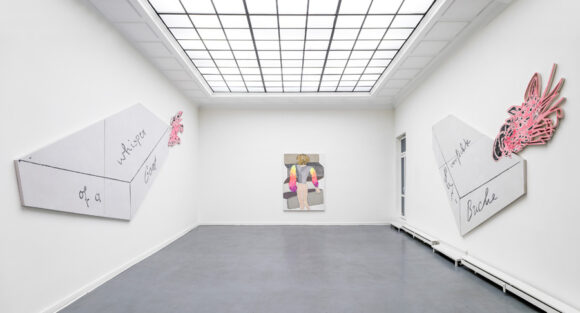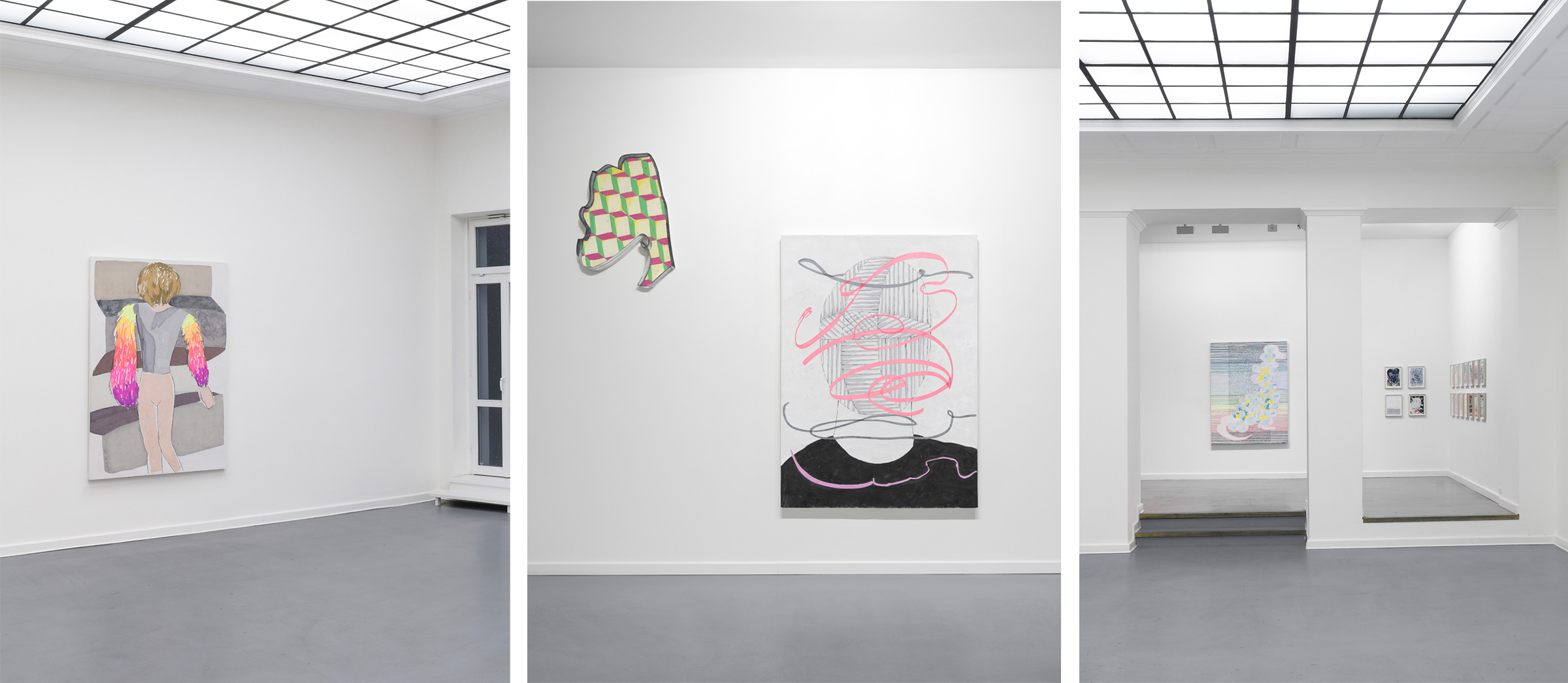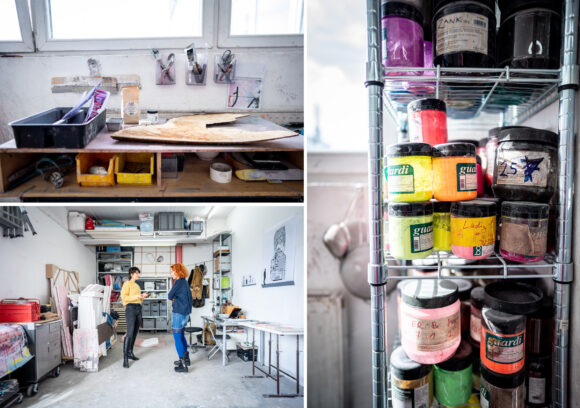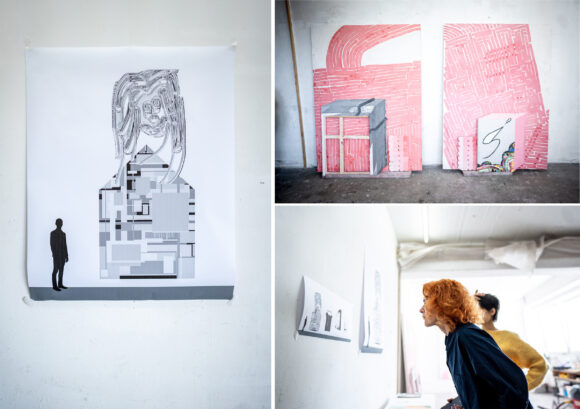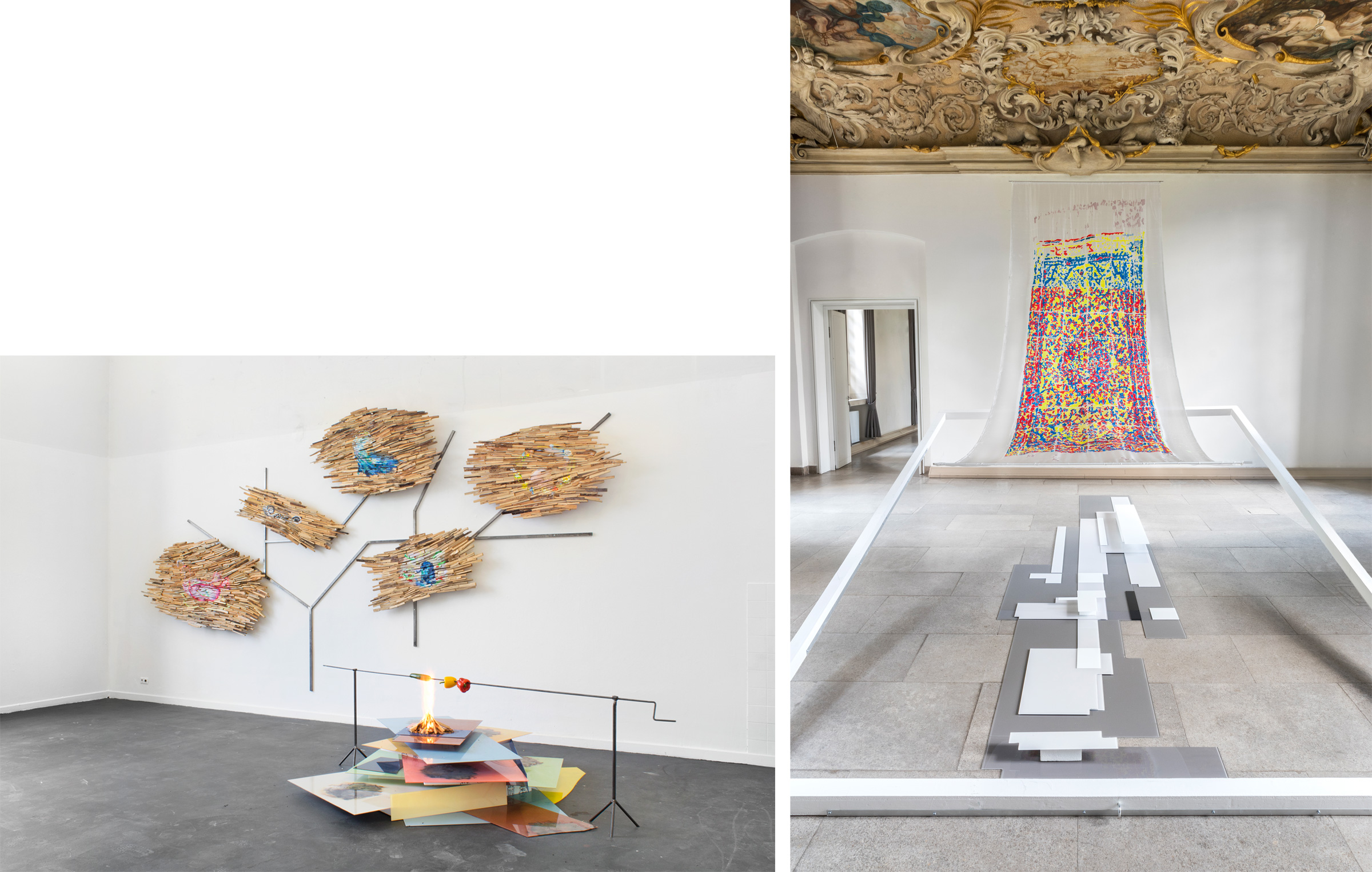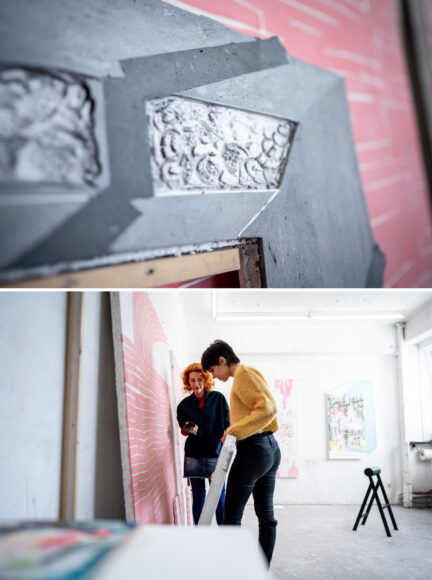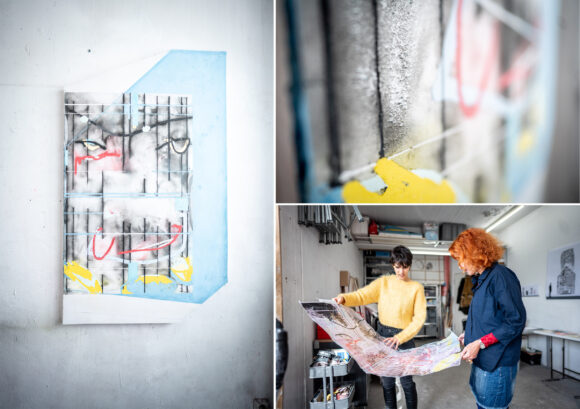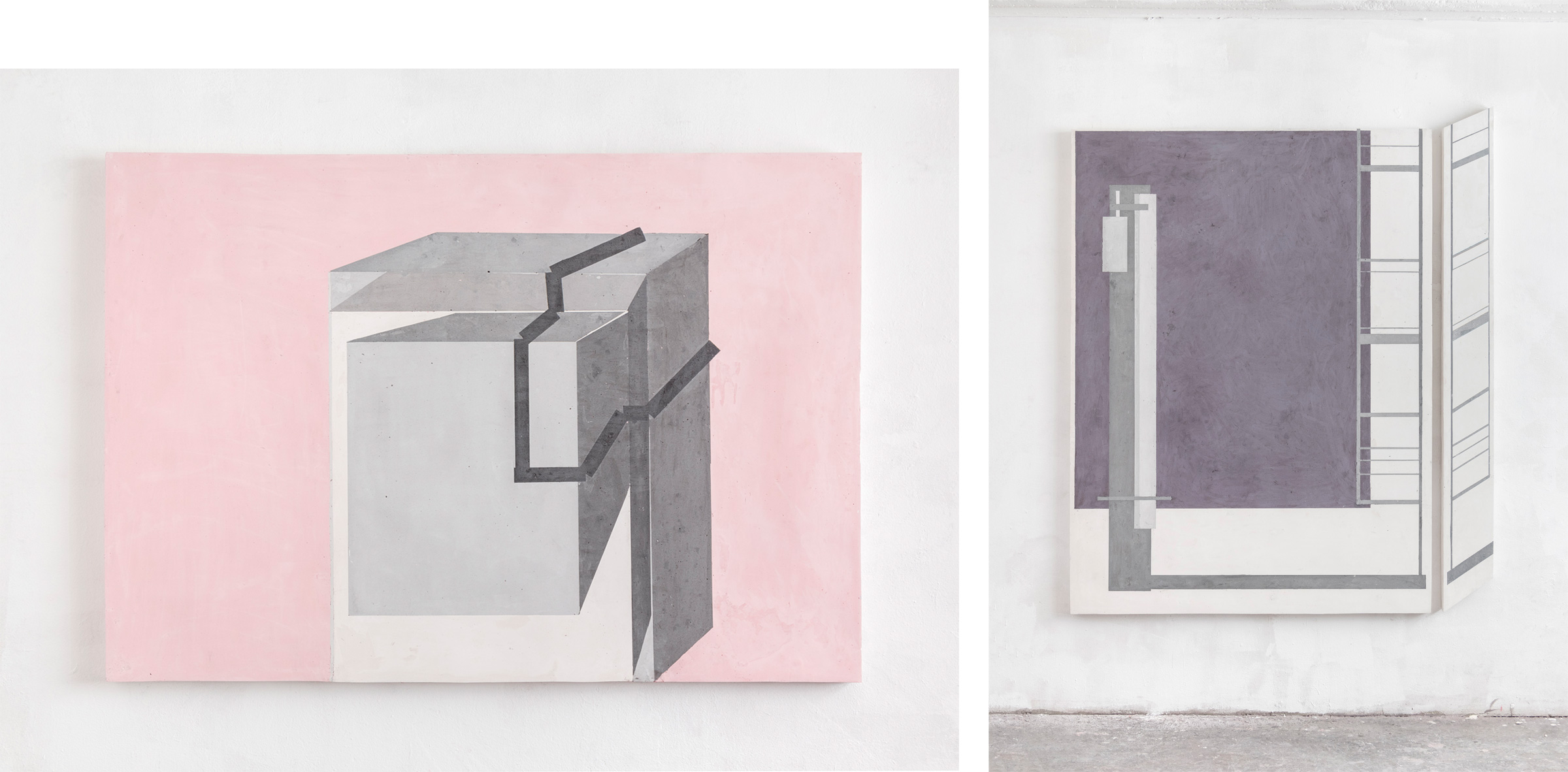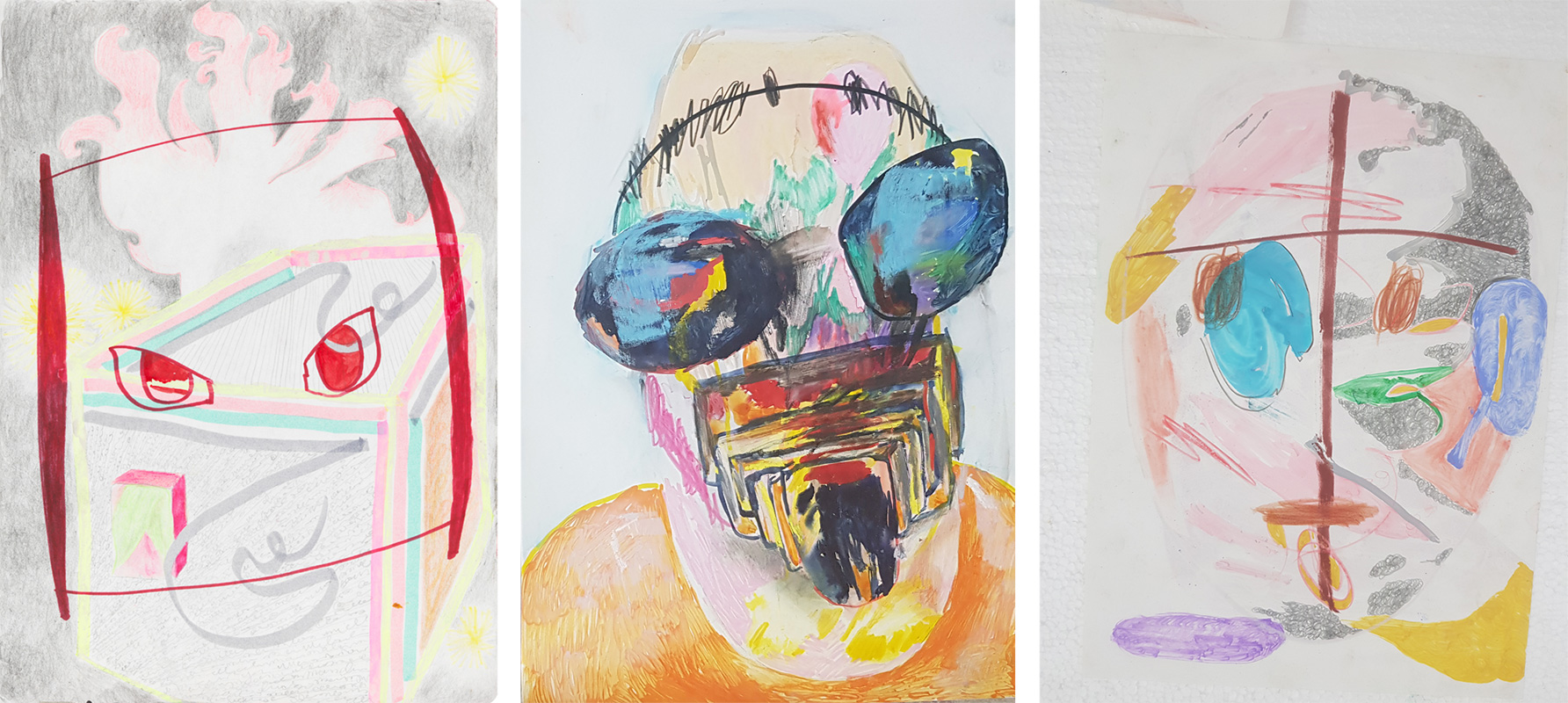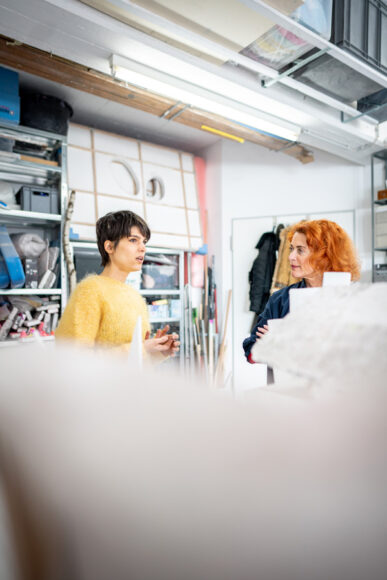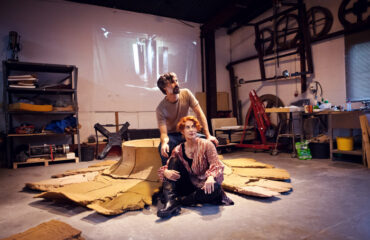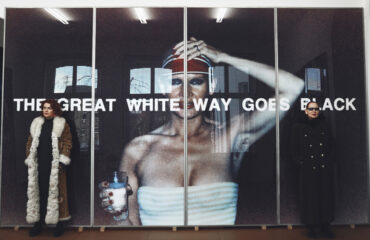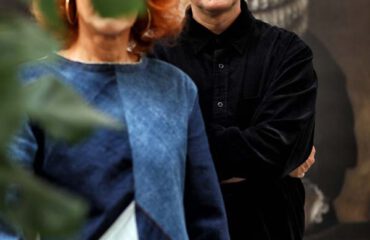Studio photos: Markus Schwer
Berlin, Dusseldorf. There are exhibitions which – although they succeed in immediately causing the viewer to react emotionally – irritate, and stimulate a closer involvement only when reflecting on them.
This happened at the visit to the solo show of Carolin Eidner at Galerie Aurel Scheibler in Berlin.
Installation view Gallery Aurel Scheibler (Foto: © Gunter Lepkowski)
How is it possible that artistic positions can – simultaneously – be pictorial and sculptural, light and monumental, figurative and abstract, structured and random? And why do the words or definitions often integrated in these pose such profound questions? During my studio visit in Dusseldorf I am trying to shed some light on these matters….
Installation views Gallery Aurel Scheibler (Fotos: © Gunter Lepkowski)
Compared to the often large formats of Carolin Eidner’s works, her studio is comparatively small. The variety of the equipment visible here allows an understanding of the broad spectrum of her sphere of activity. The computer is as much of a fixture as the drawing and painting utensils, tools or the most diversified materials. One of her preferred materials is plaster, which she uses in a completely novel way. How her central themes are reflected in the unusual treatment of the material emerges during our conversation.
Studio views
Some amusing small talk about the filter functions of Photoshop get us started. With a smile, Carolin quickly alleviates my concern of getting bogged down in details.
Carolin: Quite to the contrary. Photoshop, in this case its graphic functions, had a significant influence on the development of my techniques.
Comparing computer graphics and plaster works
With some frustration I compare the printouts of the computer with the adjoining plaster works, looking for connections.
Does this mean, the drafts are created digitally?
Carolin: Yes, also, but that is not the main thing. In the beginning, I simply had some fun using the program’s highly sophisticated features in a completely uninformed way. I drew anything that came to mind, put in layers and played with coloration option of various filter functions. I became aware of a crucial difference to painting: While in painting a picture slowly develops over various layers, from the background to the foreground, the work on the screen takes place on various layers simultaneously, but only one layer is visible. I wanted to transfer this phenomenon of transcending the foreground and the background and so started to try out various techniques.
Using cloth or wood, which should show this effect via the absorption of colour into the material I came across plaster at some stage. I noticed that paint, through pigmentation, simply penetrated into plaster. I was also itching to develop a distinct presence for a material that, in many fields, is used mainly as an additive or for making moulds, as in sculpturing. The development of the processing techniques – particularly the search for the correct supporting material for the fragile plaster – were characterised by many failed attempts, however. External influence in particular, like air pressure or humidity, continued to cause unforeseeable accidents.
Left: Example of an installation with wood: View of graduation Düsseldorf Academy, 2014. Right: Example of an installation with cloth: Horizon after D (dracula), Solo Exhibition in the Orangerie Schloss Benrath, Düsseldorf, 2018
Together, we look at a work still in progress, which reveals the supporting construction, now carefully worked out: The base is a wooden frame, divided into several levels. The plaster level mounted on top of it, which is the composition, is supported by polystyrene. On the surface, it shows a lot of cuts, which develop during the work process of the composition, as Carolin says.
Plaster work, detail view
Carolin: Mostly, I first cast an area in plaster. I then project my design image onto this surface, which may have been created either digitally or in form of a sketch. After that, I use a plaster cutter to separate the areas of the individual picture fragments and then fill these up again with differently pigmented plaster. In that manner, I keep the work going forward. Recently, I’ve enjoyed working with stencils, which I cut out from Styrodur boards in order to define the forms. Normally, I remove the stencil and fill the thus created empty spaces again with plaster. In this picture below (see following figure), I rather like simply leaving the stencil integrated. It gives the picture texture.
Left: not yet titled, 2020, top right: Detail view, bottom right: design image for a projection
Talking about graphics …. Your motifs often show graphic structures, or, to be more exact, geometrical structures. Sometimes they are drawn to perfection, but often also playfully amateurishly. Just as often combinations with figures, most often faces, can be seen in the pictures. Do these motifs arise by chance?
Carolin: They arise intuitively, but by chance. Essentially, my concern is with archetypes. Meaning: Fundamental structures, original form that lies dormant in the collective cultural subconscious and determines, not consciously noticed by us, our patterns of imagination and action and thus also our thinking. I am interested in breaking through these structures. This is expressed both in the physical handling of the material, and aesthetically and substantially, by combining the simplest human form of representation with geometrical basic forms.
Examples of geometric motives, left: Broken line Lila 2019, right: two parts, together, 2019
Examples of “figurative” drawings from the series Dizzy Lately, 2018
Is this unsophisticated, almost childlike representation once again the deliberately amateurish approach that you described earlier when we talked about the use of photoshop?
Carolin: Yes, exactly. It runs through all my work. I deliberately keep putting myself into the state of a beginner. By doing that, I create in myself an intellectual openness which allows me to embark on a new venture in an optimally detached manner. Afterwards I notice that one could have designed the work process much more simply. But that is the ongoing evidence that the most absurd outcomes, particularly in the tedious, often stupid experimental phases, show that, despite a conceptual main idea, a work develops totally differently from how it was planned. It is these errors that break out of the structure.
Also whimsical or absurd appears the play on words often found in your works or titles because they are not definable within a known context. For example, what’s it all about “whisper”, “of a” and “goat”, each of which is individually depicted in geometrical fields? And also, what about the title of the exhibition in Berlin: “The subtle genesis of Emiliano Bruni”?
Model and implementation of Whisper of a Goat, 2019
Carolin: This play on words arose in the conceptual play with the material. At some stage I started to add, in my sketch book, spatial depth into the motifs which I plan in plaster; I then exaggerated these graphics and took them over directly. When transferring this to the material, a double play with the perspective was created. Each field of this perspectival illusion was then supplemented with a word or a definition. During this process it was important to me that – because of the change of position – continuously new ranges of meanings and word sounds developed. It is just as much of a poetic play as my titles. These arise often only after the work has been completed. I try to put into words characteristics or moods which I perceive in the work. The titles may suggest to the viewer the context of a possible interpretation, although I never see this as obviously eye-catching but rather open.
I think myself back and mull over my first interaction with Carolin Eidner’s works. What exactly was it, that triggered the lasting impact? Initially, the humoristic aspects in the paintings and installations allowed the emotional access, together with the pastel-like yet often also gaudy colours, which tempted me to immerse myself in them. When having a closer look, it was an undefinable form of mystification, which irritated me and challenged me to unravel.
Initially there were questions regarding aesthetic components with which I grappled: Why this weird simultaneity of opposites? Why simultaneously picturesque and monumental, figurative and abstract, structured and random? I did not find any answers. Rather, new questions kept arising and I kept making more and new discoveries when I immersed myself in the artworks.
What was that again about a “beginner’s state of openness” which Carolin Eidner mentioned during the conversation?
She continues to engage with this attitude within her artistic work in order to be able to discover and develop novel forms of expressions – without any preconceived ideas and free from familiar contexts.
I suddenly realise, that, using this open approach, artworks are created which apparently put the viewer into the same state of mind. The usual way of looking at something is whirled around, breaks through fixed ways of thinking, challenges the viewer to pose his own questions and makes revaluations. Ultimately it results in a lasting impact, that allows the viewer to keep making new discoveries in Carolin Eidner’s works.
Further Information
Go to the artist’s portfolio on Instagram: Carolin_Instagram
The artists represented in these galleries:
in Berlin: Aurel Scheibler https://www.aurelscheibler.com/
in Cologne: Natalia Hug https://www.nataliahug.com/

